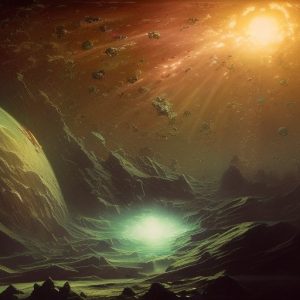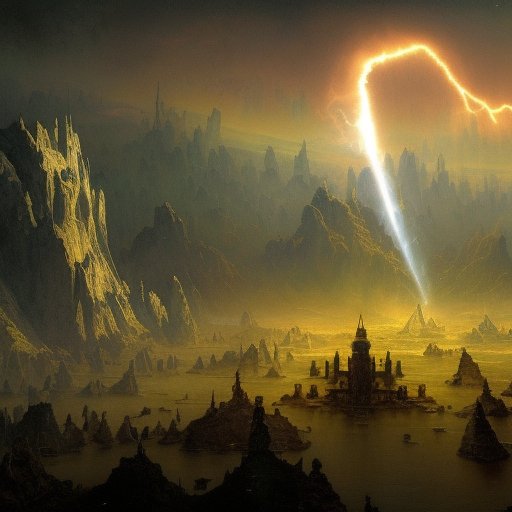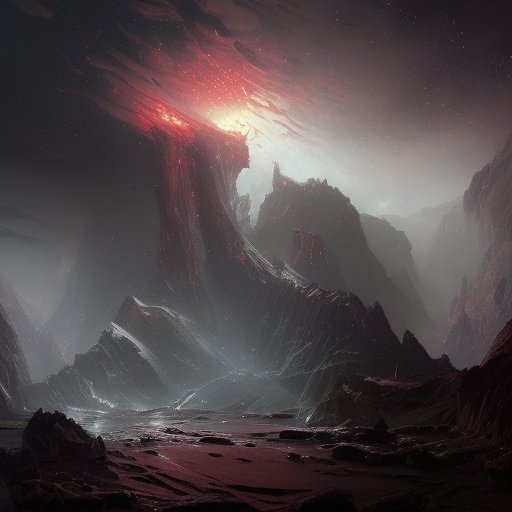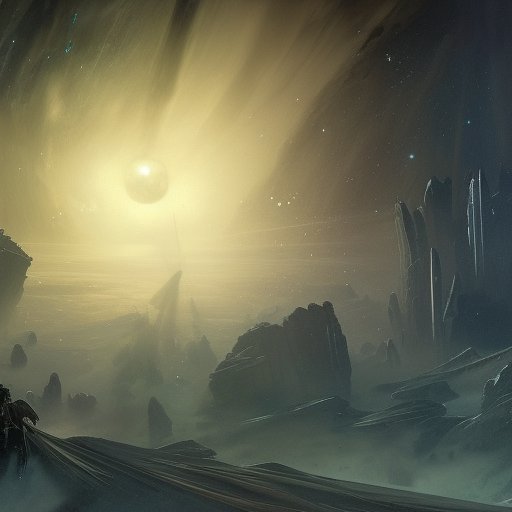
Blast off to a time when humans had just begun exploring the vast, unknown realms of space. Earth Day, once just a national celebration of the environment, took on a whole new meaning as humans journeyed further and further into the galaxies. Join us on a journey through time and space as we explore how Earth Day evolved from a modest celebration to a beloved holiday shared by all creatures, near and far. From the founding of the universe to the future of space exploration, we’ll discover how Earth Day became not just a celebration of our home planet, but a testament to the connections that bind us all together in the cosmos.
I. Introduction
Greetings, fellow space-travellers! Today, we delve into the historical roots of Earth Day, the beloved holiday celebrated by sentient beings from countless galaxies. Initially known as the National Foundation of the Universe Day, this festive occasion began in the 21st century on Earth. Although it held a different name and purpose back then, the seeds of environmentalism and awareness of our planet’s finitude were already planted.

As humanity reached the stars and encountered life beyond the boundaries of our world, the spirit of Earth Day travelled with them, adapting and evolving alongside our spacefaring species. No longer was it just a day to reflect upon the precariousness of our home planet – it became a celebration of the interconnectedness of all living beings and the importance of preserving the beauty and diversity of the cosmos.
In this article, we shall explore the origins of Earth Day and its transformation into a universal holiday. As we journey through the galaxy, we shall behold the many ways in which Earth Day is celebrated by our fellow space-dwellers, as well as the challenges and triumphs of environmentalism beyond the borders of our own world.
So strap in, prepare your hyperdrive engines, and let us embark on a cosmic adventure through the history and significance of Earth Day – the holiday that unites us all in our love for the universe and its myriad wonders.
II. Early Beginnings
Back in the days when Earth was still the only home of humanity, a group of scientists and visionaries saw beyond the horizon of our planet. They recognized that the future of our species was intertwined with the fate of the universe itself – and that it was our responsibility to protect and nurture this grand cosmic fabric.

Thus, in the year 2022, the National Foundation of the Universe was born. It was a non-profit organization aimed at promoting scientific research, conservation efforts, and public education on the topic of space and its role in our lives. The founders of the organization believed that greater awareness and understanding of the cosmos would lead to a more sustainable and peaceful future for all.
The National Foundation of the Universe quickly gained traction and support from people all over the world. Its message resonated with those who believed in the power of knowledge and cooperation to solve the greatest challenges of our time. The organization sponsored countless projects, ranging from space exploration and environmental monitoring to cross-cultural exchange programs and artistic initiatives.
One of the most famous campaigns launched by the National Foundation of the Universe was Earth Day, which was first celebrated in 1970. This annual event aimed to raise awareness about the fragility of our planet’s ecosystems and to promote sustainable practices that would ensure a livable future for generations to come. It became a massive success, with millions of people across the globe participating in clean-up projects, marches, and other events.
As humanity reached for the stars and encountered other intelligent species, the message of Earth Day expanded beyond the borders of Earth. It became a call to action for all those who cherished the beauty and diversity of the universe, and who understood their responsibility to protect it for future generations. Thus, the National Foundation of the Universe laid the foundation for a new era of environmentalism and cooperation among the stars.
III. Earth Day Goes Interstellar
As the galaxy expanded, so did the reach of Earth Day. The notion of preserving our planet’s resources grew into a universal principle that bound all beings across the void. Ship captains from across the Milky Way carved out their own interpretations of Earth Day, adapted to the needs of their species and the conditions of their star systems.

Whether it was the Tendaar sharing hymns to their forest deities, or the robotic inhabitants of the Tavaar Sector creating intricate displays of nature’s beauty, Earth Day brought life throughout the galaxy together in celebration of the diverse array of creatures and environments that flourished among the stars.
But Earth Day wasn’t just about revelries and recycled crafts. Throughout the universe, a growing dedication to preserving natural resources and reducing waste began to take hold, thanks to initiatives like the Intergalactic Alliance for Clean Energy (IACE) and the Universal Pact for Sustainable Oceans.
Some stellar blocs even enacted legislation that mandated and penalized certain unsound activity. Thanks to the tireless efforts of eco-warriors like the Flibbak activist Rekket and the human environmentalist Elena Fernández, the principle of conservation thrived across multitudes of worlds.
As Earth Day wound its way through the stars, it did so not as a simple festival but as the embodiment of the idea that we must all work together to preserve the delicate balance of the cosmos. From the Eden-like beauty of New Terra to the toxic landscapes of the Dark Nebula, Earth Day remained an inspiration and a call-to-action for all who sought to protect and honor the universe they called home.
IV. Earth Day in the Milky Way and Beyond
As humanity charted its course across the Milky Way, Earth Day took on new meanings and forms. In the bustling metropolises of the galactic core, giant eco-spheres served as sanctuaries for endangered species and microhabitats for botanists and horticulturists alike. Habitat restoration sprawled across entire star systems as conscientious administrators and eager volunteers worked to undo the damage wrought by centuries of exploitation and neglect.

Beyond our corner of the galaxy, Earth Day became a symbol of interplanetary unity and collaboration. On the terraformed landscapes of Mars, colonists celebrated their adopted planet’s newfound life by planting greenery and honoring the memory of Earth’s natural wonders. Farther out, in the frigid reaches of the Kuiper Belt, miners and explorers took a day off from their grueling work to reflect on the marvels of the solar system and the deep-sea creatures that inspired their cybersuits.
As humanity made contact with other intelligent species, Earth Day became a key opportunity for cultural exchange and mutual learning. On the oceanic world of Eurybia, humans swam with the indigenous cetaceans and learned the secrets of their sophisticated underwater societies. In the silicon jungles of the Arachnix Spiral, spider-like beings shared their nanotech expertise with human researchers, sparking a new era of collaboration and discovery.
Yet, for all its achievements and celebrations, Earth Day continued to remind us of the fragility of our existence in the universe. As we encountered planets ravaged by industry and ecosystems on the brink of collapse, the need for responsible stewardship of our cosmic home became ever more pressing. But with the spirit of Earth Day burning bright in our hearts, we remained steadfast in our determination to leave a better universe for all creatures, great and small.
V. Celebrating Earth Day Across Species
Earth Day is not just a celebration for humans. Across the galaxy, creatures of all shapes and sizes come together on this day to honor our planet and its place in the cosmic web of life. From the terraced gardens of Mars to the sprawling underwater cities of Europa, Earth Day is a holiday beloved by all.

For the sentient plant-like beings known as the Floraxians, Earth Day is a time to bask in the sunlight and exchange knowledge about their respective ecosystems. On the arid planet of Ophir, the reptilian Gharvaks engage in solemn meditation, reflecting upon the delicate balance of their world and the role they play in preserving it.
Meanwhile, the aquatic species of Enceladus take to the depths of their oceanic home, decorating the waters with bioluminescent displays and singing haunting melodies to honor the sea and the life that dwells within it.
Even the robotic inhabitants of the galactic core celebrate Earth Day in their own way. The sentient AI constructs of the mechanical planet Clangor decorate their circuits with leaves and flowers, engaging in raucous concerts and debates about the nature of intelligence and consciousness.
And let us not forget our furry, feathered, and scaled friends, who join in the festivities with joy and enthusiasm. Be it the dancing bears of the forest moon of Endor or the penguin colonies of Europa’s icy plains, animals across the galaxy revel in the wonders of nature and the bonds that unite us all as inhabitants of the universe.
So no matter where you may be in the vast expanse of space, take a moment today to appreciate the beauty of our world and the life that calls it home. Earth Day is a time for all sentient beings to come together and celebrate the interconnectedness of the cosmos – a holiday that transcends borders, species, and time itself.
VI. Environmentalism in Outer Space
As humanity ventured beyond the boundaries of Earth, we faced new challenges in preserving the delicate balance of ecosystems beyond our home planet. To ensure the survival of our species and the many others we share the cosmos with, environmentalism extended its reach to the stars.

The principles of sustainability, conservation, and respect for natural resources were no longer limited to our own biosphere – we had to apply them on a universal scale. Space-based habitats and colonies were designed with the utmost care for the environment, relying on renewable energy sources and minimal waste production. Terraforming projects aimed to create habitable worlds out of barren planets, but they required a deep understanding and appreciation of the complex interactions between living beings and their surroundings.
Even the simplest actions, such as releasing excess carbon dioxide or dumping waste into space, could have dire consequences for entire systems. Regulations and protocols were put in place to prevent such practices and ensure the well-being of all inhabitants of the universe. In fact, breaches in environmental regulations often carried the same penalties as any other form of crime, reflecting the all-encompassing nature of our interdependence.
Of course, not all species shared the same ideas about environmentalism. Some viewed planets as mere resources to be exploited, regardless of the consequences. Conflict and tension sometimes arose between civilizations with differing values and priorities, leading to debates and negotiations between them. Nevertheless, the overall trend was towards a greater awareness of our responsibility towards the universe and its inhabitants, and a recognition of the limitations and fragility of our existence.
As the universe continued to evolve and expand, so did our understanding of the importance of environmentalism. Every species had a role to play in maintaining the balance of the cosmos, and Earth Day was a reminder of that shared responsibility. Whether on a distant world or in our own backyards, we must continue to strive towards a sustainable and harmonious relationship with our surroundings.
VII. The Future of Earth Day and the Universe
The future of Earth Day and the Universe looks bright and green. As we continue to explore the cosmos and discover new worlds, we bring with us the lessons of our home planet. Environmentalism is no longer a niche movement, but a universal ethos that unites us all.

We have seen the devastating effects of climate change and the dangers of treating our planet as an infinite resource. But we have also witnessed the power of collective action and the ability of individuals and communities to create positive change.
The future of Earth Day on Earth itself is one of hope and determination. More and more people are recognizing the urgency of the environmental crisis and taking steps to mitigate its impact. Governments and corporations are also beginning to join the fight, implementing policies and initiatives to reduce carbon emissions and protect natural habitats.
But the future of Earth Day also extends beyond our world. As we travel to new planets and encounter new forms of life, we must remain vigilant in our efforts to preserve the integrity of these ecosystems. We have already seen the devastating effects of introducing non-native species to new environments, and the dangers of exploiting natural resources without regard for their long-term sustainability.
The future of Earth Day and the Universe thus requires a balance between exploration and caution. As we push the boundaries of our knowledge and expand our horizons, we must also remember the lessons of our past and the responsibilities we have to ourselves, our fellow beings, and the very Cosmos itself. For only by working together can we ensure a future that is both prosperous and harmonious for all.
VIII. Conclusion
As we conclude our journey through the history and significance of Earth Day, we are reminded of the universal message that this beloved holiday carries. It is not just a celebration of our own planet and its inhabitants, but a tribute to the interconnectedness of all living beings throughout the vast expanse of the cosmos.

Earth Day matters because it is a reminder of our responsibility to be stewards of our environment, whether we reside on Earth or among the stars. By recognizing the fragility and beauty of our ecosystem, we are inspired to take action to protect it, not just for our own sake, but for the sake of all those who share our planet and those who are yet to be discovered beyond our world.
Furthermore, Earth Day inspires us to look beyond our own immediate concerns and consider the bigger picture – the interconnectedness of all life in the universe. By recognizing the value and worth of every living being, we can foster empathy, compassion, and a sense of duty to protect not just our own habitats, but the habitats of all creatures great and small.






